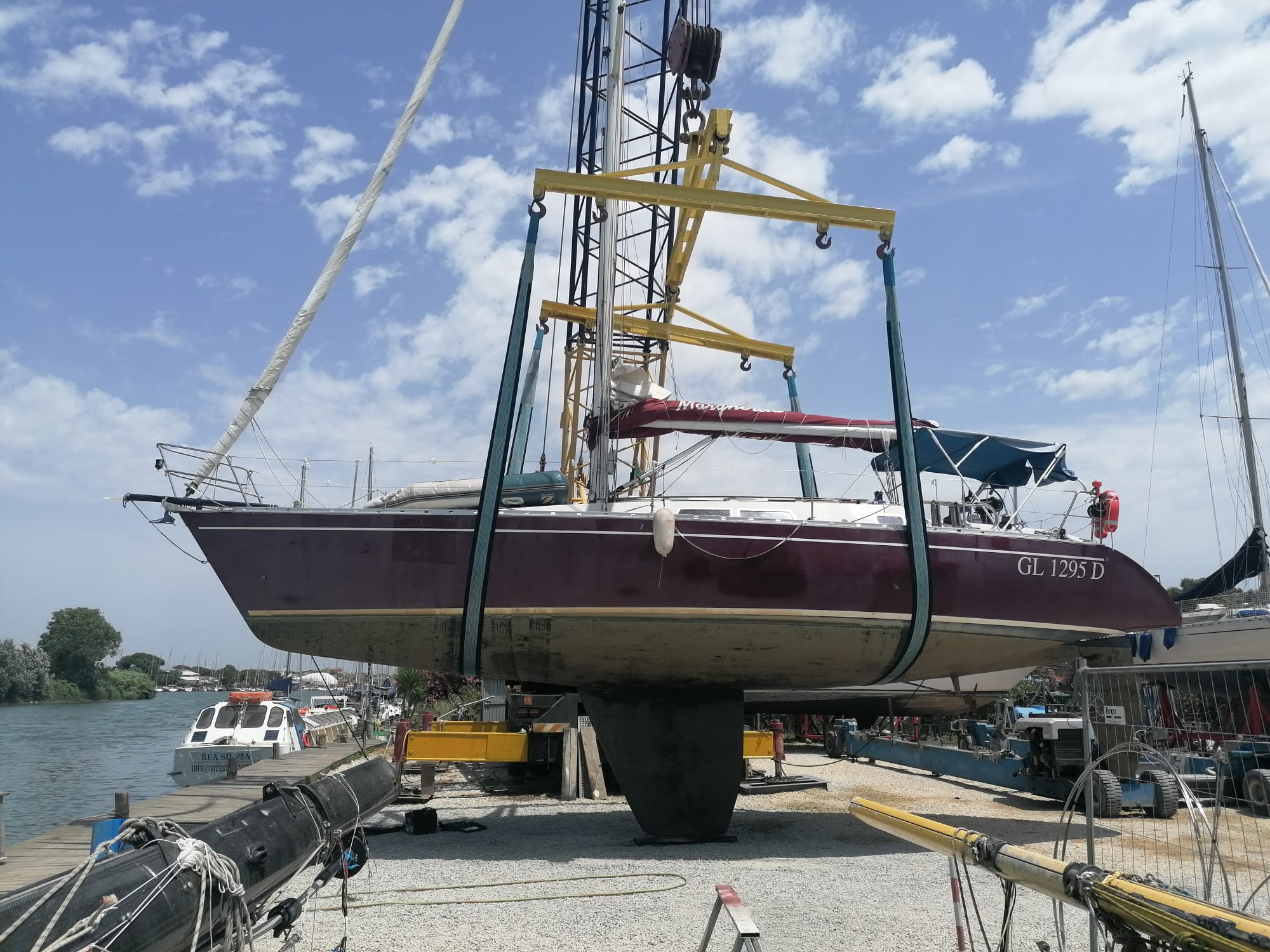The pre-purchase survey includes the following checks:
1. Sales Sheet and Documentation Analysis
I start by reviewing the sales sheet and the documentation provided by the seller or broker. This includes verifying registration papers, maintenance logs, previous survey reports (if available), and any declared upgrades or repairs. The goal is to identify inconsistencies, missing information, or potential areas of concern to verify during the physical inspection.
2. Shore-Based Hull Inspection (including Osmosis Check)
While the boat is on land (preferably on dry dock), I perform a full external hull inspection. This includes checking the integrity of the gelcoat and laminate, identifying cracks, blisters, previous repairs, and signs of osmosis (a common problem in fiberglass hulls). Special attention is given to the keel joint, bow area, and transom.
3. Inspection of Appendages: Rudder, Shaft, Propeller, and Keel
I examine the mechanical and structural components that are critical to navigation, including:
- Rudder: play, cracks, corrosion, or delamination
- Shaft and Propeller: alignment, wear, electrolysis, and damage
- Keel and Bolts: corrosion, deformation, or leakage points
These parts are often neglected but essential for safe operation.
4. Internal Hull and Structural Integrity Check
Inside the vessel, I inspect the bilge, stringers, bulkheads, and floors. This step reveals signs of water ingress, delamination, or hidden damage. I verify if the structural components are original, sound, and unmodified, especially near the keel zone or engine beds where high stresses occur.
5. Electrical and Hydraulic Systems Inspection
I test the onboard electrical systems, including the batteries, wiring, panels, chargers, and navigation lights. I also assess hydraulic systems (if applicable), such as steering systems, trim tabs, and gangways. I check for compliance with safety standards and proper functioning of the onboard circuits.
6. Engine(s) and Transmission Evaluation
A visual and operational check of the engine(s) and transmission is performed. This includes:
- Oil condition and levels
- Belts, hoses, and visible leaks
- Engine mounts and alignment
- Signs of corrosion or overheating
- Basic operational test (if feasible)
If available, engine diagnostics can be retrieved from onboard computers.
7. Accessories and Onboard Equipment Check
I verify the condition and functionality of additional equipment, such as:
- Anchor and windlass
- Pumps (bilge, freshwater, waste)
- Navigation electronics (GPS, radar, VHF)
- Fridge, stove, heaters, or air conditioning
All findings are noted to assess their usability and estimated value.
8. Safety Equipment Review
I examine the presence, age, and condition of mandatory safety equipment, including:
- Life jackets
- Fire extinguishers
- Emergency flares
- Liferaft (where applicable)
- EPIRB or AIS systems
Missing or expired equipment is noted, and I may offer recommendations for upgrades to meet legal or operational standards.
9. Final Report and Recommendations
After completing the inspection, I deliver a detailed written report, including:
- Photos of key findings
- Assessment of the vessel’s condition
- Estimated cost of necessary repairs or replacements
- Recommendations for negotiation or corrective actions
This report is a crucial tool for decision-making before purchase and can also support financing or insurance requests.
